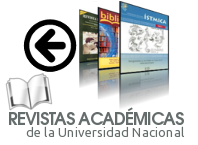Are Veterinary Public Health Services in Costa Rica Accessible to Everyone?
DOI:
https://doi.org/10.15359/udre.10-2.7Keywords:
public health, veterinary medicine, animal welfare, indigenous communitiesAbstract
Accessibility to veterinary health services in indigenous areas requires the migration of veterinarians from urban areas since the nearest medical center is approximately one hour or an hour and a half way by bus and boat. In the 2016-2019 period, this extension project visited the following communities: Pavones, Santa Rosa, Alto Conte, Las Vegas, Alto Unión, La Pita, Busmallis, Amubri, Cachabri, Daytonia, Burned Rock, Yordi, Psipirí, Paso Marcos, Casona, Keköldi, Vereh, Tongibe, and Margarita. It is coordinated by the ProQuirco Association and the institutional network of the National University. There are links with CREW (Equine Costa Rican Welfare), SENASA (National Animal Health Service of Costa Rica), and HSI (Human Society International). To comply with the disease control protocol, each community had to receive assistance twice a year. A record of the animals treated is kept and includes species and prophylactic or therapeutic treatment. A total of 5777 animals have been treated, of which 3024 were dogs, 2279 horses, 240 cats, 211 pigs, nine cows, four sheep, two chickens, one goat, one parrot, and one parakeet. In the first period of 2007-2011 (first two phases of the project), an average of 529 animals per year were treated; in the second period 2012-2015 (three phases), 1465; and in the last period 2016-2019 (four phases), 1444. It is concluded that Costa Rica requires implementing a public policy that encourages veterinary doctors to work in rural areas to improve animal welfare and public health.
References
Organización Internacional de Epizootias. (2012). Recomendaciones de la OIE sobre las competencias mínimas que se esperan de los médicos veterinarios recién licenciados para garantizar servicios veterinarios de calidad. http: www.oie.int/fileadmin/Home/esp/Support_to_OIE_Members/Edu_Vet_AHG/day_1/ DAYONE-B-esp-VC.pdf
Organización Internacional de Epizootias. (2019a). Una sola salud. https://www.oie.int/es/para-los-periodistas/una-sola-salud/-
Organización Internacional de Epizootias. (2019b). Código sanitario para los animales terrestres. https://www.oie.int/fileadmin/Home/esp/Health_standards/tahc/current/ chapitre_vet_serv.pdf
Reunión Interamericana a Nivel Ministerial en Salud y Agricultura. (2001). Informe del programa de salud pública veterinaria de la OPS sobre el cumplimiento de las orientaciones estratégicas y programáticas-OEP 1999-2000. OPS-OMS. Sao Paulo, Brasil.
Rodríguez, J., Araya, L., Murillo, J., Cuadra, S., Hernández, G., Navarro, L., Castillo, M., Torres, F. y Marín, F. (2012). Asistencia veterinaria en comunidades indígenas (2007-2012). Universidad en Diálogo, 2 (2), 87-98.
Villamil, L. y Romero, J. R. (2003). Retos y perspectivas de la salud pública veterinaria. Revisión Salud Pública, 5 (2), 109-122. https://revistas.unal.edu.co/index.php/revsaludpublica/article/viewFile/18412/19812



